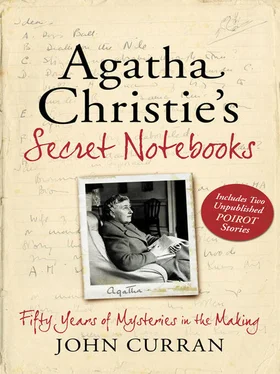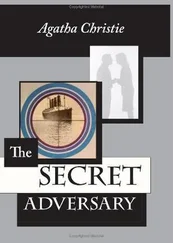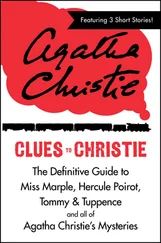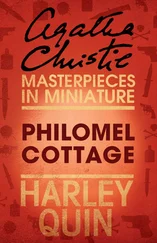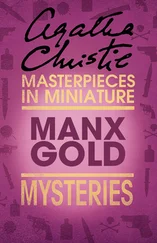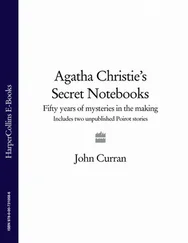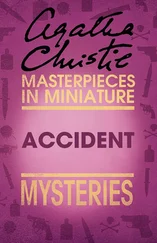This book went through more title changes than any other of her books. At various times it was 4.15, 4.30 and 4.54, before eventually becoming Four-Fifty from Paddington. The manuscript is headed ‘4.54 from Paddington’, mainly because, as Christie explained in a letter to her Edmund Cork dated 8 April (1957), there was no actual train at that time. She agreed that ‘Four-Fifty from Paddington’ or even ‘5 o’clock from Paddington’ were better titles.
The extract below from Notebook 47 would seem to predate similar notes as this one has no names (apart from Miss Marple), but the basic idea is the one followed in the finished novel. The blackly comic final question is a classic musing of Christie the arch-plotter. A few pages later notes for ‘Greenshaw’s Folly’ and The Unexpected Guest are pursued and the train idea is shelved. As ‘Greenshaw’s Folly’ was first published in December 1956, this supports the contention that the notes for Four-Fifty from Paddington did not pre-date its composition by very much.
Train—seen from a train? Through window of house. Or vice versa?
Train idea
Girl coming down by train to St. Mary Mead sees a murder in another train drawn up alongside—a woman strangled. Gets home—talks about it to Miss Marple—Police? Nobody strangled—no body found.
Why—2 possible trains one to Manchester—one a slow local. Where can you push a body off a train
Notebook 3 sketches the basic idea (with Mrs Bantry in place of Mrs McGillicuddy) but Notebook 45 has a succinct and accurate version of the opening chapter of the novel:
The Train
Mrs McGillicuddy—a friend of Miss Marple’s—going to stay with her—in train from Paddington—another train on other line—but same direction—that’s overtaken—hang together for a moment, through window of compartment level with hers—a man strangling blonde girl—then—train goes on.
Mrs MG very upset—tells ticket collector—Station master? Oh! Jane I’ve seen a murder
Uniquely among Christie’s books, we are informed from the outset of Four-Fifty from Paddington that the murderer is a man. A mere four pages into Chapter 1 the reader is told: ‘Standing with his back to the window and to her was a man. His hands were round the throat of a woman who faced him and he was slowly, remorselessly, strangling her.’ With such an unequivocal statement the possibility that the figure seen could have been a woman in disguise is never seriously considered and Christie knew her readers well enough to know that they would feel totally cheated if that transpired to be the solution. Therefore, with the exception of Emma Crackenthorpe (the motive) and Lucy Eylesbarrow (the investigator), all the main characters are male. The problem this presented was to make the men broadly similar as physical beings while distinguishing them as characters. She reminds herself of this in Notebook 22:
Must get clear on men
Three dark men—all roughly 5ft 10 to 6 ft Loose jointed
People Cedric eldest?
Harold married no children
Alfred
Bryan Eastley Ex pilot—Husband of Edith (dead)
Father of Alistair or stepfather?
2 sons of old man—good boy (in Bank) Artist—or scene designer or producer
Cedric—a Robert Graves—rolling stone, uninhibited—(eventually to marry Lucy Eylesbarrow)
Sir Harold Crackenthorpe—busy man—director of Crackenthorpe Ltd. Well to do—not really? On rocks?
Bryan? R.A.F. Wing Command D? At a loose end
Alph[red] Dark slender—the crooked one—black market in war—Ministry of Supply
The ‘Robert Graves’ reference is to Christie’s real-life friend and neighbour, the author of I, Claudius among others. Graves was a critical fan and the dedicatee of Towards Zero. This reference also clarifies the question left unanswered at the end of the novel—which of the men will Lucy eventually marry?
There were seemingly minor points to consider but ones that impacted on the plot—how to ensure the necessary darkness for the commission of the crime and how to account for the presence in the house of two young boys. The question of possible dates is considered in two Notebooks:
Points to settle
Date of journey possibly Jan 9th or thereabouts Points to take in—holidays (boys) New Year (Cedric) Time of getting dark (train)
Dates
Holidays? April—Stobart-West and Malcolm there
So murder end of February? Say—24th 26th
The eventual decision to place the murder just before, and the investigation just after, Christmas answered all the concerns—the early darkness, as well as the presence of the two young boys and Cedric.
But the biggest problem about Four-Fifty from Paddington is the identity of the corpse. It is a problem for Miss Marple, the police, the reader and, I suspect, for Agatha Christie herself. We do not know for certain until the novel’s closing pages whose murder is actually under investigation. And it must be admitted that it makes what would otherwise have been a Grade A Christie novel, something of a disappointment. It also raises the question of how, divine intervention aside, Miss Marple can possibly know the story behind the murder. The original reader at Collins, who reported on the manuscript, admitted that ‘unless I am being very stupid I cannot see how anyone could have known that murderer’s motive’. He was not ‘being very stupid’ as it is not possible to deduce the identity of the killer, or the motive, although, in retrospect, both are perfectly acceptable. The following note shows that Christie had two ideas about the possible identity of the corpse—Anna the dancer or Martine—and, reluctant to abandon either, eventually used aspects of both:
Is dead woman Anna the dancer or not?
Is Anne = Mrs Q—or is Anna red herring arranged by Q
Is woman killed because she is Martine and has a son or because she is Q’s wife and he plans to marry
But the devotion of even the most ardent Christie fan is severely tested when Martine is finally identified.
7
Elephants Can Remember:
Murder in Retrospect
But now, she realised, she had got to remember. She had got to think back into the past…To remember carefully every slight unimportant seeming incident.
Sparkling Cyanide, Chapter 1
SOLUTIONS REVEALED
Mrs McGinty’s Dead • Ordeal by Innocence • ‘Sing a Song of Sixpence’ • Sleeping Murder • Sparkling Cyanide
Some of Agatha Christie’s strongest titles feature murder in the past—the investigation of a case where the detective is dependent on the memories of those involved, where the trail has grown cold and clues have disappeared, and where the uncovering of the truth often awakens a sleeping murderer. She first experimented with this in Dumb Witness, where Poirot investigates a two-month-old death; six years later her greatest triumph finds Poirot examining a 16-yearold case in Five Little Pigs (see Chapter 4); in two other cases, Mrs McGinty’s Dead and Ordeal by Innocence, the verdict is already handed down and of her last six novels, five of them feature this type of plot. Also in this category we find her historical detective story, Death Comes as the End, a daring if not wholly successful experiment from mid-career.
Dumb Witness 5 July 1937
Emily Arundell writes to Hercule Poirot on 17 April but he does not receive the letter until 28 June. And by then she is dead. Poirot goes to Market Basing to investigate her death, where the case involves spiritualism, a brooch, a dog’s ball—and another death.
Читать дальше
Конец ознакомительного отрывка
Купить книгу
